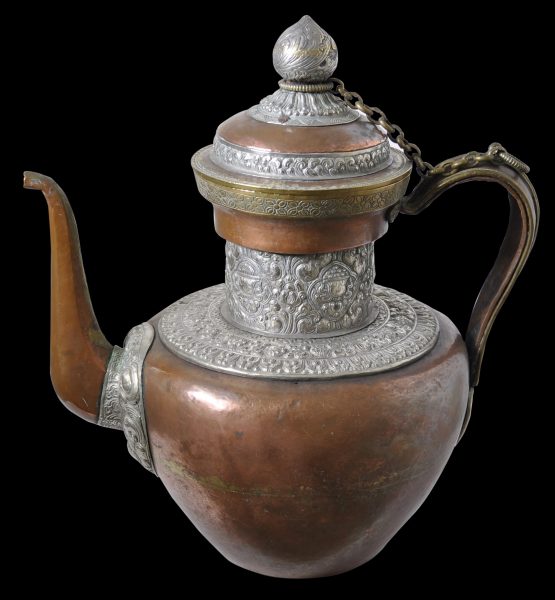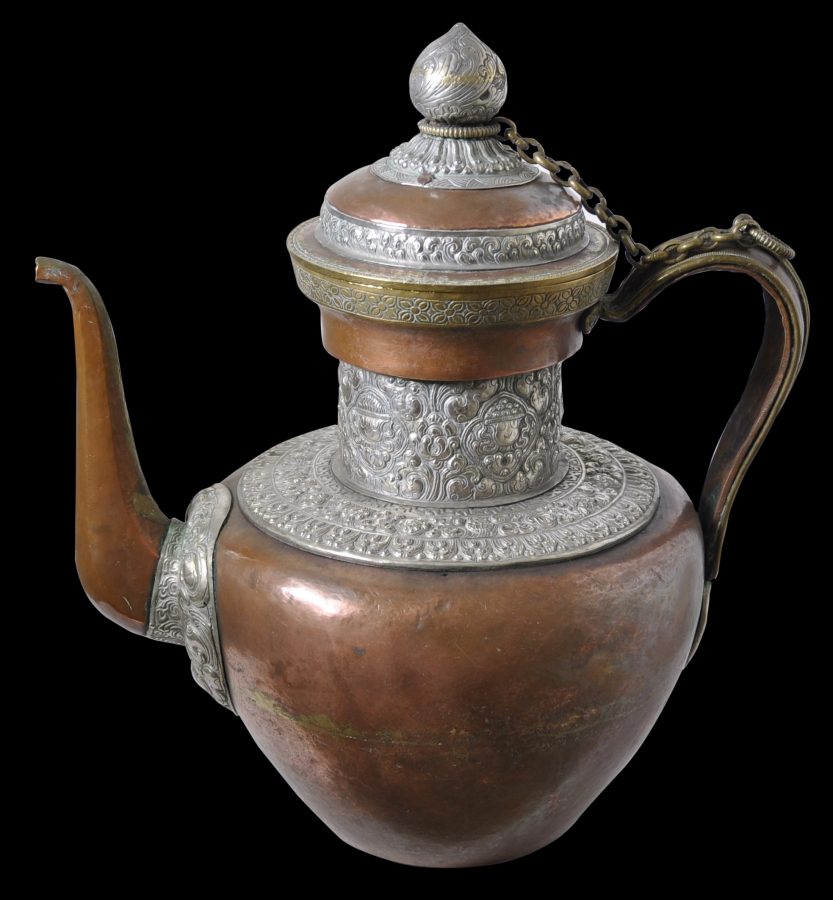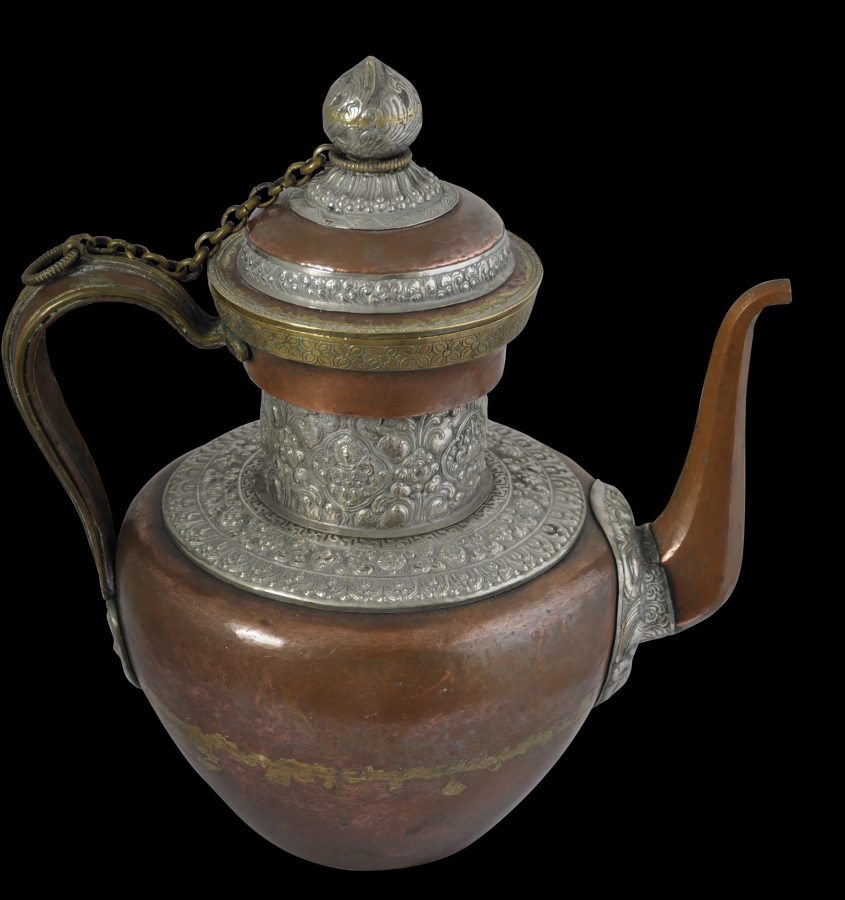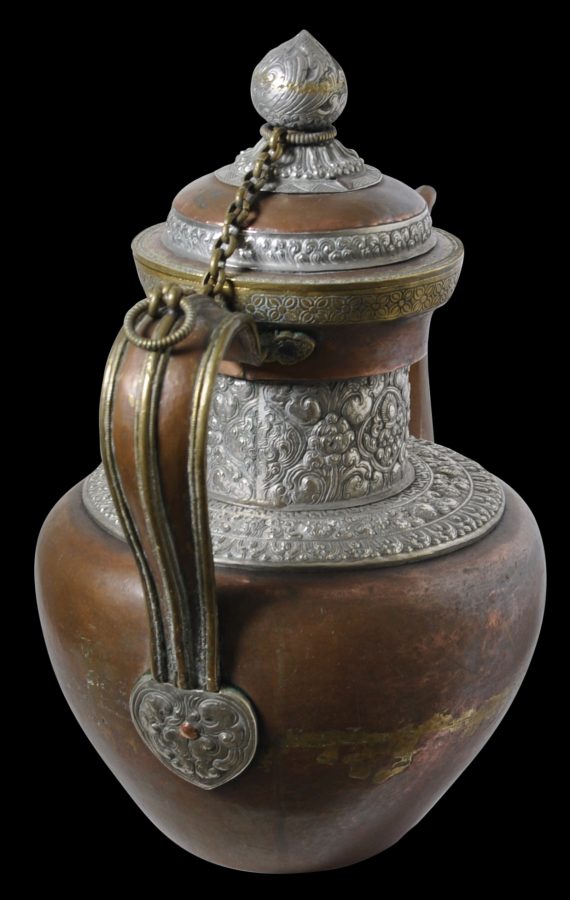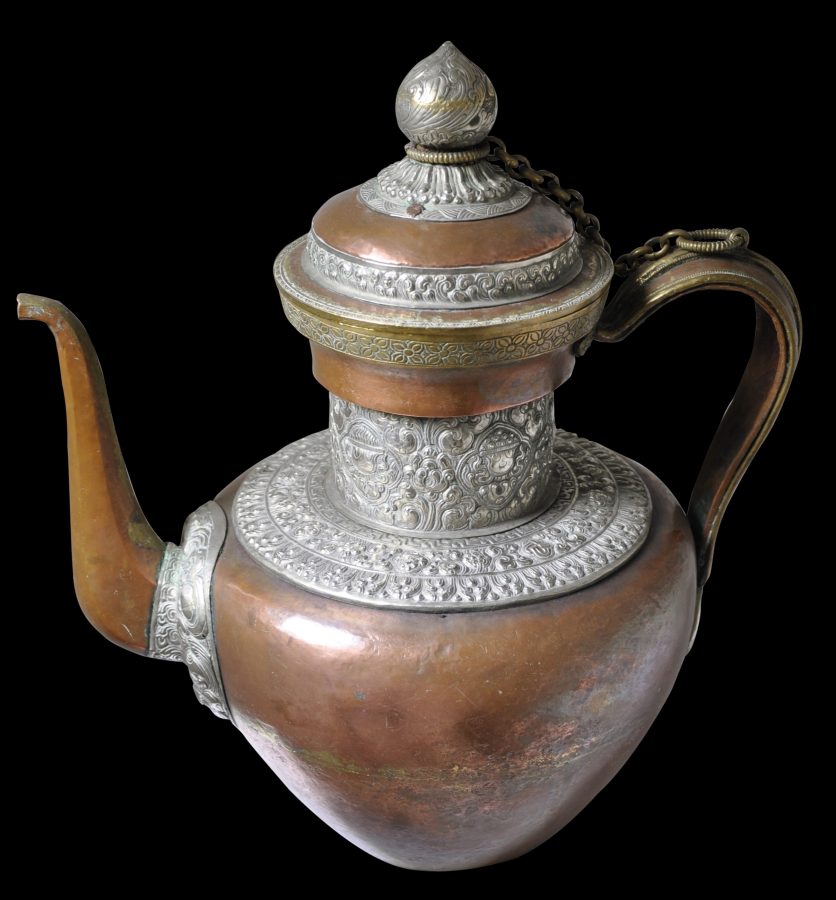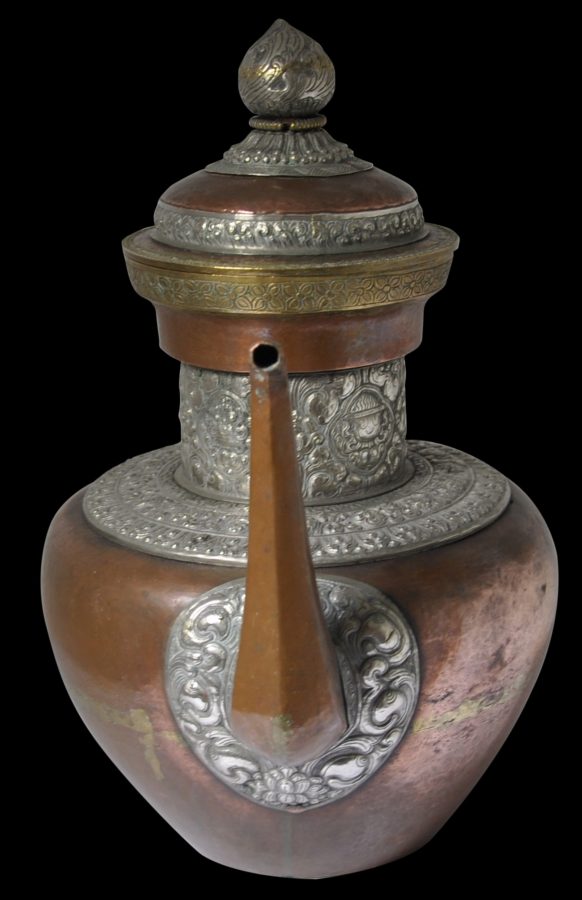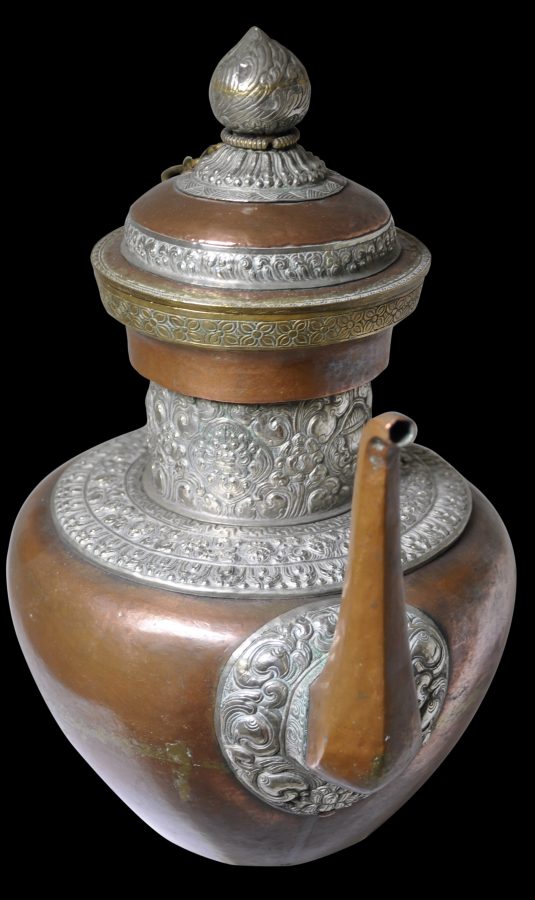This fine teapot of hand-beaten copper with repoussed and chased silver and engraved brass mounts is in a style typically associated with south central Tibet.
The neck and shoulder of the teapot are covered in silver finely worked with a variety of motifs including Himalayan-Buddhistic motifs, scrolling foliage, and stylised cloud motifs.
The spout is gadrooned and particularly sculptural. It emerges from a silver colour that has been similarly decorated.
The sturdy handle rises from the base out of a silver plaque and joins the neck. A chain attaches the lid to the handle.
The lid is domed and decorated with bands of silver. The edge is lined with a band of brass that is engraved with geometric flower motifs. The lid is finished with a large lotus bud finial that is chased with petal-like detailing.
Tea in Tibet was an important staple in the diet. The tea was made from Chinese black tea bricks. Butter from yaks and salt were then added and churned together to give a thick, soup-like liquid. This was drunk throughout the day by all social classes. This teapot would have come from an aristocratic family or perhaps a wealthier monastery. There are some minor dents associated with age and use and an overall excellent patina.
The teapot was acquired in the UK. Many Tibetan and Himalayan items came to the UK during colonial times, and most probably were acquired in India by colonial administrators and their families and were brought back to the UK then.
This example is in fine condition and is without significant dents or repairs. The silver is likely to be an alloy less than sterling standard as is typical of Himalayan silverwork. The base has been made in upper and lower sections and then soldered together. The seam and the attendant solder are evident. Overall, this is a fine, sculptural example.
References
Birdwood, G., The Industrial Arts of India, 1880.


